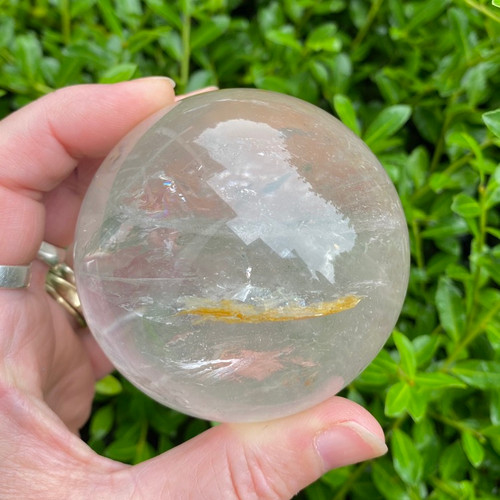Quartz with Pyrite and Iron Inclusions
Measures Approximately: 4 3/4" x 2 1/4" x 1 3/4"
Weighs Approximately: 11.8 oz
I adore pyrite in anything.
Quartz is the most common of the silica minerals. The group is all composed of silicon dioxide but have different crystal structures. The others form under specific conditions like very high temperatures. The name quartz comes from the German quarz, without a “t”. It may be derived from the Polish kwardy (“hard”). Pure quartz is colorless but trace metal inclusions can color it purple (amethyst), yellow (citrine), and brown (smoky quartz). It also forms in fibrous varieties without visible crystals like chalcedony.
Pyrite, also known as "Fools Gold", is an iron sulfide (FeS2). Its name is taken from "pyr", meaning fire. It will produce sparks that can start a fire if struck against something hard. It can be distinguished from gold by using a streak test, which will show a black green streak. Gold creates a yellow streak and is much softer. However, pyrite and gold do often form together, making it just confusing enough for a would-be gold miner. Pyrite also often forms in dark, organic sediments that create beautiful pyritized fossils. As an inclusion in quartz, pyrite can express in a variety of crystal formations.









